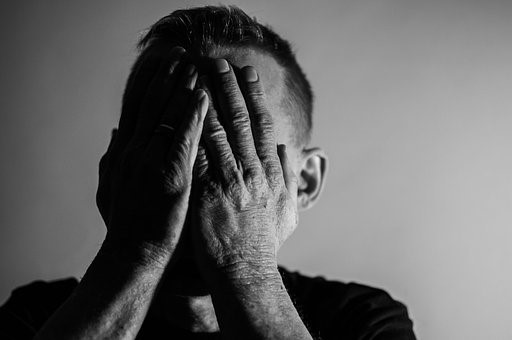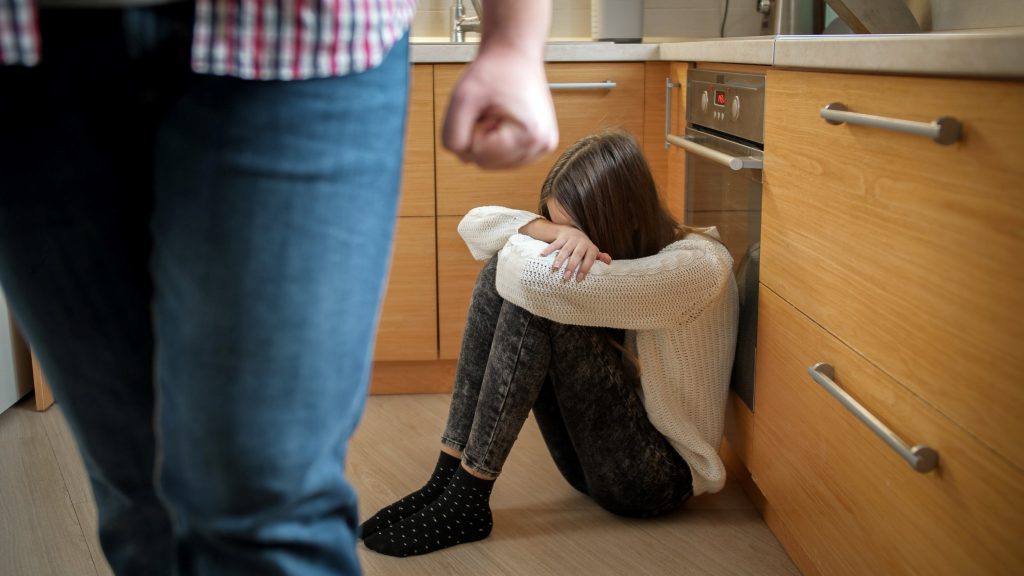WARNING: Physical restraint or seclusion should only be used if the child’s behavior poses imminent threat of serious physical harm to themself or to others and if other modes of intervention has been ineffective. However, it should be discontinued as soon as the child calms down and changes their behavior. *Before reading this article please make sure to read our Medical Disclaimer*
The idea of physically restraining someone as young and vulnerable as a child should seem appalling for good reason. It’s the very last resort for when your child’s tantrums escalate to becoming a credible threat, putting themselves and others at risk of harm. That’s precisely why you should learn how to restrain them properly and mitigate as many potential risks as possible.
Restraint isn’t inherently bad, and physical restraint is indeed warranted in some urgent situations. When physically restraining a child that’s out of control, your priority is to limit their means of receiving/inflicting bodily harm until they eventually calm down.
Only use physical restraint when the child poses a threat, and don’t endanger their well-being while restraining them. This should never be used as a tool for discipline or compliance. Lastly, after the situation passes, focus on discerning what triggered this response, along with the best way to prevent these cases from reoccurring.
We sincerely hope that you’d never have to restrain a child who’s out of control, but it’s better to be safe than sorry. Restraining anyone, much less a child, can’t be done in a safe way: only in safer ways. We’ll share every trick and tool at our disposal to make sure your child’s episode can be managed with the least risk possible – on everyone’s part!
Clarifications on Restraint

A note: restraint isn’t just pinning your child down with all your might, hoping they’ll stop making a scene. Restraint is simply stopping your child from exacerbating a situation that could cause harm, using as little force as possible. It’s a physical action, but it isn’t inherently violent.
Do you grab your child when you see them try to run around recklessly in a parking lot? That’s restraint too. You apply restraint on a pretty regular basis to safeguard your child’s well-being. There’s no denying that this type of action is needed in some cases.
That said, the type of physical exertion needed to fully restrain a child lashing out carries notable dangers. There isn’t a 100% guaranteed way to contain their episode safely and consistently – it’s the last resort for a reason. They could get hurt even if you follow the guidelines to the letter.
How this turns out would also depend on the intensity of their tantrum, your child’s immediate environment, and the type of preventative/restraint measures taken.
WARNING: Physical restraint or seclusion should only be used if the child’s behavior poses imminent threat of serious physical harm to themself or to others and if other modes of intervention has been ineffective. However, it should be discontinued as soon as the child calms down and changes their behavior.
Keep Your Emotions In Check
Physically restraining a child during a tantrum involves firmly exerting only the bare minimum force needed to prevent them from endangering themselves. You need to have a calm, reassuring presence while doing so, which is much easier said than done.
Keeping one’s emotions in check during such an ordeal is difficult, and you might be overcome with anxiety or some other compromising emotion. These greatly inhibit your ability to respond, heightening the risk carried by these already-dangerous situations.
For some people, these feelings may not abate in time to allow a proper response to handling a child physically lashing out. If that’s the case, it would be better for one to extricate themselves from the scene rather than act in a manner they aren’t capable of sustaining.
There are two key emotions to be wary of when handling an out-of-control child: fear and anger.
Fear

Fear could leave you unable to respond decisively, putting both you and your child in harm’s way. Most professionals trained to physically restrain children operate in pairs or groups – this way, they ensure that:
a) the decision of physical restraint was justified.
b) the application of restraint was appropriate.
c) the situation is handled objectively.
If you’re administering physical restraint on your own, the last thing you want to be is emotionally compromised.
If you can’t guarantee everyone’s safety (you, your child, and bystanders, if any) to a reasonable extent, it would be a better course of action to leave and let the tantrum die down. That said, this may not be an option in certain cases (i.e. child actively seeking to harm you or themselves, fragile or dangerous environment near your child).
Mentally prepare yourself for this eventuality to avoid being rendered ineffectual. If you find yourself in just this situation, focus on getting your bearings. Calm yourself down with deep breathing exercises, then act according to your best judgment.
Anger

Alternatively, you might meet your child’s display with indignance or even rage. Keep your fury in check, as you run a serious risk of utilizing excessive force and subsequently harming your child. Physical restraint is a tool only used in emergencies, and should not be done with even the slightest hint of anger on your mind.
An investigation into Illinois public schools that permitted physical restraint drew jarring results. Thousands of cases had school children forcibly restrained for disobedience, with this last-ditch technique to protect everyone’s safety being utilized inappropriately as a disciplinary tool. Many of these children suffered from abrasions, bruising, and psychological trauma due to heavy-handed misapplication of physical restraint by frustrated authority figures.
Physical restraint is not a disciplinary tool, and should never be used to force compliance. Don’t let frustration or anger seep into your actions – keep the child’s safety at the forefront of your thoughts. Physical restraint is a tool meant to MINIMIZE harm, not cause it.
Standing Restraints (Wrist)
This restraint is a technique that aims to pacify someone standing up, and doing so requires the following steps:
- Approach the child in question (preferably from behind or from their side)
- Grab onto the child’s wrists (your right hand holding onto their left wrist, and your left hand holding onto their right wrist)
- Cross the child’s arms over their chest (so that both their hands are now near the opposite shoulder)
- Pull backward, so that the child is leaning back onto you
- Release child immediately after they settle down
Seated Restraints (Arms)
This restraint technique is much easier to manage, though it works best with another set of hands helping out. The proper procedure to follow is down below:
- Using both hands, grab hold of one of the child’s arms
- (After partner grabs hold of the other arm) guide subject to sit on the chair
- Release child immediately once they settle down
Life-Threatening Actions To Avoid
Physically restraining a child is very dangerous. Don’t ever forget that you’re pitting an adult’s strength and weight against a child’s fragile, developing body. It’s easy to make devastating mistakes in the heat of the moment, and these could seriously harm or even cripple your child.
Don’t put pressure on joints
Pressure on joints can cause a significant amount of pain, which is the last thing you want when physically restraining someone. It can take upwards of thirty minutes for someone being restrained to stop lashing out, and excess pain will needlessly extend the duration of this grueling process.
Misplaced pressure could also lead to pinched nerves, which when left untreated lead to long-term nerve damage. It could easily lead to cases of bad bruising, sprains, or even fractures. In certain cases, you may even permanently compromise your child’s range of motion.
In the heat of the moment, it’s hard to tell if you’re applying more pressure than you need to restrain them. Be extra mindful of this concern and keep clear of their joints.
Don’t touch their neck
The degree of uncontrolled movement is very high in these situations, making any contact with the neck dangerous. The neck is a tight network that houses nerve bundles, muscles, and bones working in very close proximity to one another. It’s very vulnerable to any sort of compression damage, creating a high risk of long-term harm.
Keep your hands away from their neck. There’s no reason to apply pressure there – focus on limbs and other extremities lashing out. It’s also extremely easy to accidentally scratch someone’s neck while restraining them, leading to further agitation and potential for infection.
Don’t obstruct their airway
The moment the person being subdued shows ANY signs of breathing difficulty, you need to release them promptly. There are no exceptions here, and ignoring this sign could very well cause permanent brain damage or even kill the subject being restrained.
-
Compression Asphyxia
They might be suffering from something known as compression asphyxia. This is a form of suffocation caused by significant pressure or weight being forced onto a person’s upper body. Physical restraint techniques focus on inhibiting the person’s means to lash out (i.e. arms, legs, waist) rather than forcing them to remain in one place.
We repeat: there is no reason to leverage your weight onto the child’s upper body. This was especially horrendous with prone restraint techniques, which had individuals pinned face-up on the ground. The technique was barred from use against restraining children for good reason, as it carried needless risk and no real safety advantage over standing and seated restraints.
-
Positional Asphyxia
Another threat you may encounter is positional asphyxia, which is a form of suffocation that comes from the environment obstructing one’s airways. This is common with babies falling asleep with their faces covered, but can also occur when one is pushed to the ground.
Supine restraints had subjects pinned down face-first onto the ground and carried a significant risk of positional asphyxia. Like prone restraints, this technique was eventually deemed inappropriate and needlessly cruel for usage against children lashing out.
WARNING: Physical restraint or seclusion should only be used if the child’s behavior poses imminent threat of serious physical harm to themself or to others and if other modes of intervention has been ineffective. However, it should be discontinued as soon as the child calms down and changes their behavior.
Don’t Make Physical Restraint a Frequent Occurrence
Having to be forcibly restrained from an outburst can be a traumatizing experience, and your child’s mind will race to find ways to reconcile what happened with what they did. The last thing you want them to do is normalize this experience.
Children won’t implicitly understand that physically restraining them was done for their safety. They might see it as something you’d do when they act out, so be quick to clarify the mistaken assumption. They shouldn’t see it as something they deserve for bad behavior.
After they cool down, make sure you set time aside for a proper conversation. Talk about what transpired, why physical restraint was necessary, and how the two of you can avoid it moving forward. Your child must understand the incident was not their fault, and that the measures taken aren’t intended to be a disciplinary method.
More cases of physical restraint also mean more chances for your child to get hurt. They’ll eventually learn to accept it, and may even expect this behavior in their daily lives. They might even begin physically restraining other children when they start to act up! You must convey to them that this isn’t something one does, except for the most urgent safety situations.
Look Into What Led To This Event (Short and Long Term!)

Prevention is key to minimizing the physical and emotional toll of this ordeal for everyone involved. Your child’s outburst likely had some warning signs crop up, so be sure to reflect on anything you might have missed. Pay close attention to how things escalated, why they escalated, and what might be done to keep things under control.
We’ve included a few examples for you to look out for down below.
- Were there any types of medication (introduction or removal) involved?
- Did your child experience any signs of a panic attack (i.e. difficulty breathing, dizziness, chills) before or during the incident?
- Was there any type of environmental (i.e. loud noises) or emotional (i.e. anger directed at them) stimuli involved that might have exacerbated the situation?
- Have they shown signs of emotional duress before this episode? When did the first few signs appear? What were the last signs before the incident?
Try to think about what else could have triggered their troubling response, and be sure to ask your child plenty of questions to fill in any knowledge gaps (once they’ve calmed down).
Final Thoughts
Physically restraining a child is a last-resort effort to prevent them from causing or experiencing harm, and should never be done lightly. Your priority while restraining them should be minimizing the risk of bodily harm, not restricting their movement.
Clarify that this was done for their own good, not as a disciplinary method. Be sure to look into what caused their episode to begin with, and look for measures you can take to mitigate them.